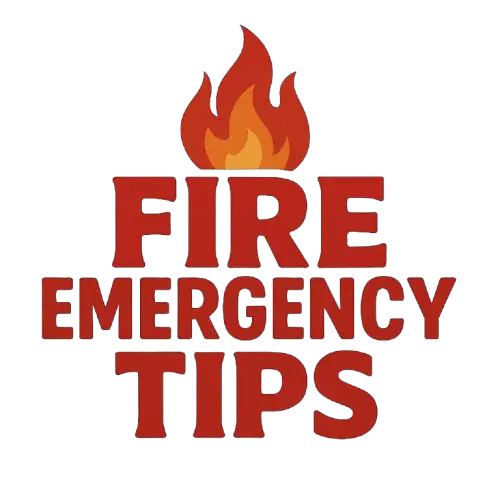
Fire departments in the United States play a crucial role in ensuring public safety, responding to emergencies, and protecting lives and property from fire and other disasters. Each department operates independently, but they often collaborate on regional training, resources, and emergency response efforts. Here’s an overview of the fire departments across the country, including their structure, responsibilities, and significant achievements.
Structure of Fire Departments
Fire departments can vary significantly in size and structure, but they generally fall into the following categories:
- Municipal Fire Departments: These are city or town-based departments responsible for fire protection in their respective jurisdictions. They typically have dedicated fire stations, firefighters, and equipment. Examples include:
- New York City Fire Department (FDNY)
- Los Angeles Fire Department (LAFD)
- Volunteer Fire Departments: Many smaller communities rely on volunteer firefighters who are trained to respond to emergencies alongside paid staff. These departments are essential in rural areas where budget constraints may limit full-time firefighting personnel.
- Combination Departments: Some fire departments blend career (paid) and volunteer firefighters. This model allows for flexibility in staffing and can effectively meet community needs.
- Specialized Units: Some larger departments have specialized units to handle hazardous materials (HAZMAT), technical rescues, wildland firefighting, and other specific emergency services.

Responsibilities of Fire Departments
Fire departments are tasked with a multitude of responsibilities, including:
- Fire Suppression: The primary role is to respond to and extinguish fires, minimize property damage, and protect lives.
- Emergency Medical Services (EMS): Many fire departments also provide EMS for medical emergencies, often being among the first responders on the scene.
- Fire Prevention and Education: Training the community about fire safety, conducting inspections, and enforcing fire codes are essential parts of their mission.
- Rescue Operations: Fire departments conduct rescue missions for individuals trapped in vehicles, buildings, or hazardous environments.
- Disaster Response: In addition to fires, they respond to natural disasters, such as floods, hurricanes, and earthquakes.

1. New York City Fire Department (FDNY)
Overview:
- Location: New York City, NY
- Established: 1865
- Size: Over 16,000 uniformed firefighters
- Noteworthy Achievements:
- Largest fire department in the world.
- Renowned for its rapid response to emergencies, including the 9/11 attacks.
- Emphasizes extensive training programs for its personnel.
Notable Features:
- FDNY operates a diverse fleet of specialized vehicles.
- Specialized units for hazardous materials, technical rescues, and marine incidents.
- Active community outreach programs to enhance fire prevention and safety.
2. Chicago Fire Department
Overview:
- Location: Chicago, IL
- Established: 1833
- Size: Over 4,500 firefighters
- Noteworthy Achievements:
- Pioneered the use of modern firefighting techniques.
- Home to the first recognized paramedic program in the U.S.
- Focuses on community engagement and public education.
Notable Features:
- Equipped with state-of-the-art firefighting and rescue apparatus.
- The Chicago Fire Academy provides comprehensive training for recruits.
- Collaborates with neighboring departments for mutual aid and large-scale incidents.
3. Los Angeles Fire Department (LAFD)
Overview:
- Location: Los Angeles, CA
- Established: 1886
- Size: Over 3,500 sworn personnel
- Noteworthy Achievements:
- Implements innovative technologies for firefighting and emergency response.
- Active involvement in wildfire prevention and management.
- Strong emphasis on diversity and inclusion.
Notable Features:
- LAFD operates a fleet of helicopters for aerial firefighting.
- Specialized urban search and rescue (USAR) teams for disaster response.
- Engages in ongoing community outreach and education initiatives.
4. Houston Fire Department (HFD)
Overview:
- Location: Houston, TX
- Established: 1838
- Size: Over 4,000 firefighters
- Noteworthy Achievements:
- Utilizes advanced technology for fire prevention and response.
- Emphasizes community risk reduction programs.
- Hosts an annual firefighter training academy.
Notable Features:
- HFD focuses on prevention through community safety education.
- Specialized units for hazmat response and technical rescues.
- Actively involved in regional and national firefighting collaborations.
5. Boston Fire Department
Overview:
- Location: Boston, MA
- Established: 1678
- Size: Over 1,500 firefighters
- Noteworthy Achievements:
- One of the oldest fire departments in the country.
- Strong commitment to historical preservation of firefighting artifacts.
- Known for its swift response and effective incident command.
Notable Features:
- BFD operates a fireboat for waterfront firefighting.
- Conducts regular fire drills in schools to enhance community preparedness.
- Historical Fire Museum showcases the evolution of firefighting in Boston.
6. San Francisco Fire Department
Overview:
- Location: San Francisco, CA
- Established: 1849
- Size: Over 1,700 firefighters
- Noteworthy Achievements:
- Implements earthquake preparedness and response strategies.
- Emphasis on environmental sustainability in firefighting practices.
- Hosts the annual “Tribute to Resilience” event.
Notable Features:
- Specialized water rescue teams for incidents in the bay area.
- Engages in regular neighborhood emergency response drills.
- Provides public education on earthquake safety and preparedness.
7. Dallas Fire-Rescue Department
Overview:
- Location: Dallas, TX
- Established: 1872
- Size: Over 2,000 firefighters
- Noteworthy Achievements:
- Utilizes advanced data analytics for efficient resource allocation.
- Focuses on professional development through ongoing training.
- Collaborates with community organizations for fire prevention.
Notable Features:
- DFRD operates a heavy urban rescue team for complex incidents.
- Mobile community education units for outreach and safety education.
- Engages in regular public awareness campaigns on fire safety.
8. Seattle Fire Department
Overview:
- Location: Seattle, WA
- Established: 1889
- Size: Over 1,000 firefighters
- Noteworthy Achievements:
- Known for its response to the Great Seattle Fire in 1889.
- Emphasizes sustainable practices in firefighting operations.
- Strong commitment to diversity and inclusion.
Notable Features:
- SFD operates a marine response unit for incidents in Puget Sound.
- Urban search and rescue teams trained for incidents like earthquakes.
- Participates actively in wildfire prevention and response efforts.
9. Phoenix Fire Department
Overview:
- Location: Phoenix, AZ
- Established: 1886
- Size: Over 1,900 firefighters
- Noteworthy Achievements:
- Implements data-driven strategies for incident management.
- Focuses on proactive community risk reduction programs.
- Emphasizes continuous improvement through after-action reviews.
Notable Features:
- PFD operates a fleet of specialized firefighting and rescue vehicles.
- Emphasis on swift water rescue capabilities due to the desert environment.
- Community-driven initiatives for fire prevention and safety education.
10. Miami-Dade Fire Rescue Department
Overview:
- Location: Miami-Dade County, FL
- Established: 1935
- Size: Over 2,500 firefighters
- Noteworthy Achievements:
- Responded to high-profile incidents such as Hurricane Andrew.
- Utilizes cutting-edge technology for emergency medical services.
- Strong emphasis on community paramedicine programs.
Notable Features:
- MDFRD operates a specialized technical rescue team.
- Provides community training on CPR and AED use.
- Active involvement in hurricane preparedness and response.
FAQs About Fire Departments
- Q: How are fire departments funded?
- A: Fire departments are typically funded through local government budgets, property taxes, and, in some cases, grants and donations.
- Q: What is the role of volunteer firefighters in these departments?
- A: Volunteer firefighters play a crucial role in augmenting professional firefighting forces, providing additional manpower and expertise.
- Q: How do fire departments collaborate during large-scale incidents?
- A: Fire departments often have mutual aid agreements, allowing them to share resources and personnel during significant incidents.
- Q: What training do firefighters undergo?
- A: Firefighters undergo extensive training in areas such as firefighting techniques, emergency medical services, hazardous materials response, and technical rescues.
- Q: How can the public support their local fire department?
- A: Public support can include attending community events, participating in fire prevention programs, and volunteering for local fire department initiatives.
Honorable Mentions
While the top 10 fire departments showcased above excel in various aspects, it’s essential to acknowledge the dedication of other outstanding departments across the country. Fire departments in cities such as Atlanta, Denver, and Phoenix, among others, consistently demonstrate excellence in their commitment to public safety and emergency response.
Conclusion: A Unified Commitment to Safety
The top 10 fire departments in the USA, along with many others, share a common commitment to ensuring the safety and well-being of their communities. From densely populated urban areas to expansive wildlands, these departments adapt to diverse challenges, continuously evolving to meet the needs of the residents they serve.
As pillars of strength in times of crisis, fire departments across the nation embody the spirit of selfless service and dedication. Their unwavering commitment to training, innovation, and community engagement not only saves lives but also contributes to the resilience and vitality of the communities they protect.
